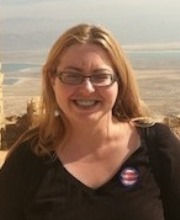Kathryn Lindsey

First Position
Postdoctoral Associate, University of ChicagoDissertation
Families Of Dynamical Systems Associated To Translation SurfacesAdvisor
Research Area
Abstract
Dynamical systems associated to translation surfaces naturally arise in families equipped with a topological structure. How is the topological structure on the family related to the dynamical properties of the individual systems? We investigate this question for three types of families of dynamical systems associated to translation surfaces. The collection of translation surfaces of finite type has a natural stratification based on the number and type of cone points. Each stratum has a topology with respect to which the stratum consists of between one and three connected components. We investigate how which connected component of a stratum a translation surface belongs to determines how many invariant components any translation flow on that surface may have. Specifically, we characterize the numbers of minimal and periodic components possible for translation flows on surfaces in the hyperelliptic connected components of strata. The group SL(2, R) acts on each stratum of translation surfaces. The horocycle flow is the action of the one-parameter subgroup of matrices ht = 1 t 01 . For any fixed translation surface M , we examine how the closures of the orbits under the horocycle flow of the surface r[theta] [MIDDLE DOT] M are related to each other, where r[theta] = cos [theta] [-] sin([theta]) sin([theta]) cos([theta]) . We show that for a residual set of angles [theta], the closure of the orbit of r[theta] [MIDDLE DOT] M under the horocycle flow is equal to the closure of the orbit of M under SL(2, R). We then apply this result to obtain a new characterization of lattice surfaces in terms of minimal sets for the horocycle flow. A large class of translation surfaces of infinite type can be thought of as "limits" of a sequence of translation surfaces of finite type. Analogously to the way Rauzy diagrams describe the renormalization dynamics (and first return maps to a transversal of the translation flow) of finite type translation surfaces, Bratteli diagrams encode the renormalization dynamics (and first return maps to a transversal of the translation flow) for these surfaces of infinite type. Finite truncations of Bratteli diagrams correspond to surfaces of finite type, so Bratteli diagrams hint at a "moduli space" encompassing translation surfaces of both finite and infinite type. We investigate how the transla- tion flow on the "limit" surface of infinite type is related to the translation flows on the finite type surfaces in the associated sequence. We prove that any finite entropy, measure-preserving flow on a standard Lebesgue space is measurably isomorphic to the translation flow on a translation surface of infinite type. iii